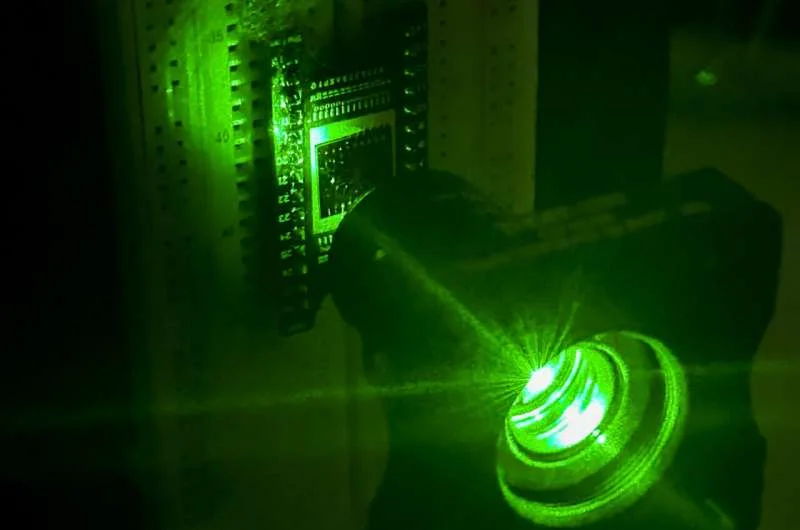A tiny device mimics human vision and memory
- June 14, 2023
- 0
Researchers have created a small device that “sees” and creates memories just like humans; This is a promising step towards having applications that can make fast, complex decisions,
Researchers have created a small device that “sees” and creates memories just like humans; This is a promising step towards having applications that can make fast, complex decisions,

Researchers have created a small device that “sees” and creates memories just like humans; This is a promising step towards having applications that can make fast, complex decisions, such as with self-driving cars. The neuromorphic breakthrough is a single chip powered by an indium oxide doped sensing element that is thousands of times thinner than a human hair and requires no external parts to operate.
Engineers from RMIT University in Australia led the study, with the participation of researchers from Deakin University and the University of Melbourne. The team’s research shows a working device that captures, processes and stores visual information. Thanks to the precision engineering of doped indium oxide, the device mimics the human eye’s ability to capture light, prepackage and transmit information like the optic nerve, and store and categorize it in a memory system like our brains can.
The team says these features can combine to enable ultra-fast decision making.
Group leader Professor Sumit Walia said the new device will be able to perform all the necessary functions (information detection, creation and processing and storage of memories) rather than relying on external power-intensive computations that hinder real-time decision making.
“Performing all these functions in a small device has been a huge challenge so far,” said Walia of the RMIT School of Engineering. “With our invention, we created the ability to make decisions in real time because it doesn’t need to process large amounts of irrelevant data and doesn’t slow down by transferring data to individual processors.”
The new device was able to demonstrate the ability to retain information for a longer period of time compared to previously reported devices, without the need for frequent electrical signals to refresh the memory. This capability significantly reduces power consumption and improves device performance.
The team’s paper, titled “Long-lived DC photocurrent in 3 nm fine-doped indium oxide for integrated light measurement and intersensory neuromorphic computation,” has been published. Advanced Functional Ingredients. First author and RMIT PhD. Researcher Aishani Mazumder said it uses analog processing, which allows the human brain to process information quickly and efficiently using minimal energy.
Digital processing, on the other hand, is energy-intensive and wasteful and hinders the rapid collection and processing of information.” “Neuromorphic vision systems are designed to use analog processing similar to the human brain; This can significantly reduce the amount of energy required to perform complex visual tasks compared to current technologies.”
The team used ultraviolet light as part of their experiment and is working to expand the technology towards visible and infrared light, with many possible applications including bionic vision, autonomous operations in hazardous environments, food shelf life assessment and advanced forensics.
“Imagine a driverless car that can see and recognize objects on the road, just as a human driver can quickly detect and track or track space debris. This will be possible with the help of neuromorphic vision technology.”
Walia said that neuromorphic systems can adapt to new situations over time and become more efficient with more experience.
“Traditional computer vision systems that cannot be miniaturized, such as neuromorphic technology, are often programmed according to certain rules and are not as easily adaptable as they used to be.” “Neuromorphic robots have the potential to operate autonomously for extended periods of time in hazardous situations where workers are exposed to possible crashes, explosions and toxic air.”
The human eye has a single retina that captures the entire image and is then processed by the brain to identify objects, colors, and other visual features. Walia said the team’s device mimics the capabilities of the retina using single-element image sensors that capture, store and process visual information on a single platform.
“The human eye is extremely adept at responding to changes in the environment much faster and much more efficiently than cameras and computers,” he said. “We’ve been working for several years to create a camera with similar capabilities, inspired by the eye, through a neuromorphic engineering process.” Source
Source: Port Altele
As an experienced journalist and author, Mary has been reporting on the latest news and trends for over 5 years. With a passion for uncovering the stories behind the headlines, Mary has earned a reputation as a trusted voice in the world of journalism. Her writing style is insightful, engaging and thought-provoking, as she takes a deep dive into the most pressing issues of our time.